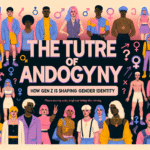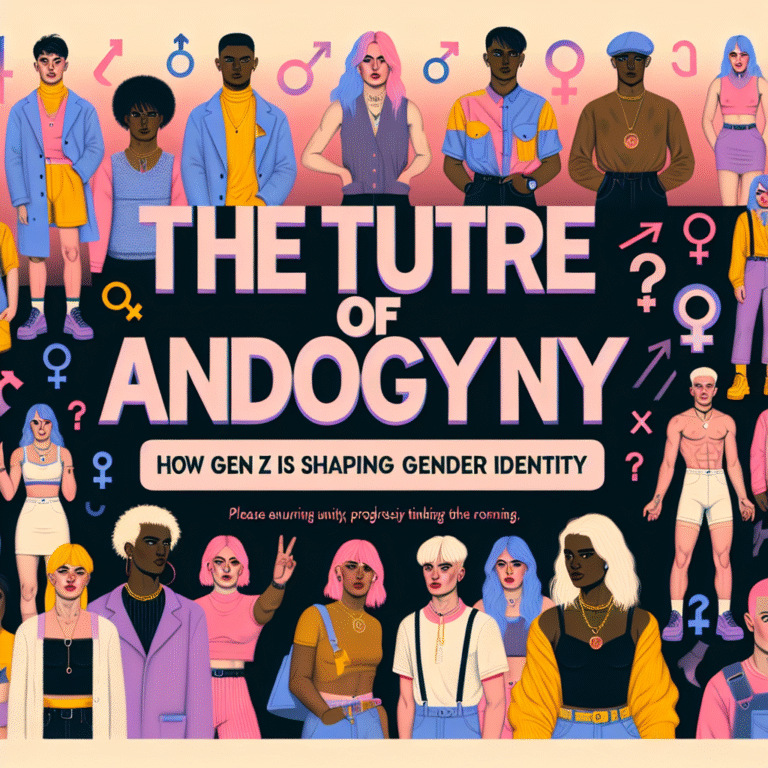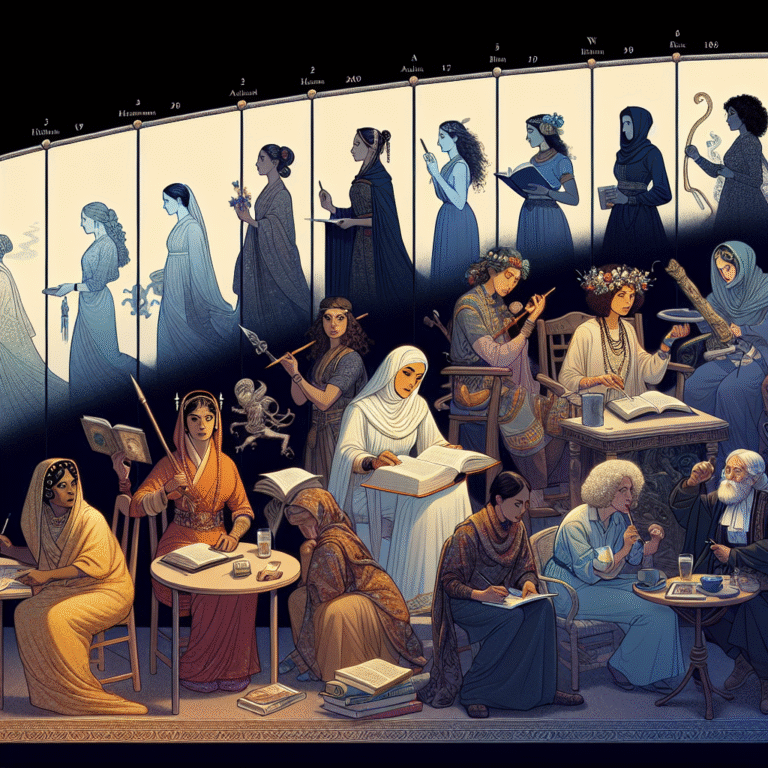
Introduction
In a world profoundly shaped by diverse cultures and experiences, the narrative of feminism is equally multifaceted. Feminism around the world: diverse cultural perspectives on gender activism invites us to explore a rich tapestry of movements, ideologies, and actions that vary by region, ethnicity, and social context. Each strand tells a story rooted in its unique historical, cultural, and socio-economic circumstances. Understanding these varied perspectives not only enriches our comprehension of gender equality but also fosters solidarity among global movements.
By examining the nuanced landscapes of feminism in different cultures, we can appreciate both the universal struggle for equality and the localized demands for justice that women advocate. This article seeks to delve deeply into several cultural perspectives on gender activism, showcasing real-world applications through case studies, highlighting critical data, and offering insights that are not only informative but transformative.
The Intersectionality of Feminism
Understanding Intersectionality
In the realm of feminism, intersectionality is a crucial concept that recognizes that gender does not exist in isolation. Various factors—such as race, class, sexual orientation, and ability—interact to shape individual experiences. This understanding challenges a one-size-fits-all approach to gender activism.
Case Study: The United States
The American feminist movement has evolved across waves, each emphasizing different challenges faced by women. The first wave focused on legal issues, primarily suffrage, while the second wave expanded to issues of equality in the workplace, sexuality, and reproductive rights. The emergence of intersectional feminism in the 1990s highlighted the diverse needs of women of color, LGBTQ+ individuals, and those from various socio-economic backgrounds.
Relevance: This case study illustrates how a singular focus on gender can overlook the lived experiences of marginalized groups. By adopting intersectionality, American feminism has become more inclusive, addressing multiple layers of discrimination.
Feminism and Cultural Contexts
Cultural backgrounds shape the way feminism is perceived and enacted globally. Societal norms, values, religious beliefs, and local customs deeply influence gender activism.
Case Study: Nigeria
In Nigeria, the feminist movement has faced unique challenges shaped by colonial history, religion, and cultural patriarchy. The #BringBackOurGirls campaign, which emerged following the abduction of over 200 schoolgirls by Boko Haram in 2014, highlighted the intersection of education, religious extremism, and gender-based violence. Advocates like Aisha Yesufu have become prominent voices, demanding governmental accountability and educational opportunities for girls.
Relevance: This illustrates how feminism can be both a response to immediate crises and a broader movement for systemic change, shaped by local realities.
Global Feminism Movements
The Rallying Cry for Equality
Feminism is far from monolithic; it consists of many movements that embody local struggles yet connect through shared goals of equality and justice.
Case Study: India
India’s feminist movement is characterized by its diverse voices, from urban activists to rural women. In 2012, the tragic gang rape of Jyoti Singh sparked nationwide protests, crystallizing issues of sexual violence and women’s rights. Organizations like the Women’s March India have emerged in response, emphasizing both legal reforms and cultural shifts.
Relevance: The Indian case demonstrates how local grievances can ignite widespread activism, connecting various demographics under a common goal for justice and safety.
The Role of Technology in Feminism
In today’s digital age, technology has become a powerful tool for feminist activism. Social media platforms allow voices to amplify and bring global attention to local issues.
Case Study: #MeToo Movement
Originating in the United States, the #MeToo movement transcended borders, garnering support across various cultures and languages. Women in different countries have adapted the movement to address their specific contexts, from workplace harassment in Japan to everyday misogyny in Egypt.
Relevance: The #MeToo movement exemplifies cross-cultural solidarity, showing how an idea can evolve while remaining relevant in diverse environments.
Challenges Facing Feminist Movements Globally
Despite progress, feminist activism continues to face significant challenges, often exacerbated by socio-economic conditions, political repression, and cultural resistance.
Political and Legal Barriers
In many countries, women’s rights remain limited by laws that enforce patriarchal structures.
Case Study: Afghanistan
The Taliban’s return to power in Afghanistan in 2021 brought a significant regression in women’s rights. Feminists have mobilized both locally and globally to resist these oppressive measures, advocating for education, employment, and basic freedoms.
Relevance: Afghanistan’s situation underscores the fragility of women’s rights in politically volatile contexts, highlighting the need for continuous vigilance and activism.
Economic Inequality
Economic challenges play a crucial role in hindering feminist movements. Economic empowerment is essential for achieving gender equality.
Case Study: Bangladesh
In Bangladesh, the garment industry employs a large percentage of women but often subjects them to exploitative working conditions. Activist organizations work tirelessly to improve labor rights and advocate for safer working environments, shedding light on economic justice as a fundamental feminist issue.
Relevance: This highlights the intersection of labor rights and feminism, showcasing how economic empowerment can drive social change.
Data-Driven Insights
Understanding the global landscape of feminism requires a look at the data. Here, we present various statistics that underscore the importance of feminist activism across cultures.
| Region | Percentage of Women in Leadership Positions | Gender Pay Gap | Rate of Gender-Based Violence |
|---|---|---|---|
| North America | 30% | 18% | 1 in 5 women |
| Middle East | 17% | 22% | 1 in 3 women |
| South Asia | 22% | 35% | 1 in 4 women |
| Sub-Saharan Africa | 23% | 30% | 1 in 3 women |
| Latin America | 32% | 12% | 1 in 4 women |
Key Takeaways from the Data
- Leadership Representation: Women’s leadership representation varies significantly, indicating the need for targeted interventions to improve gender equality in governance.
- Gender Pay Gap: Most regions still experience a gender pay gap, emphasizing the importance of economic equality in the feminist agenda.
- Gender-Based Violence: The alarming rates of violence against women underscore the need for systemic change and urgent action.
Conclusion
The landscape of feminism around the world: diverse cultural perspectives on gender activism is an intricate mosaic reflecting both struggle and resilience. By embracing intersectionality, acknowledging local contexts, and leveraging technology, companies and organizations can foster environments that support women globally.
As we reflect on the insights shared in this article, it’s clear that while the road to gender equality is fraught with challenges, it is also filled with examples of courage, innovation, and solidarity. Each movement, each voice contributes to a global dialogue that holds the promise of a just and equitable future.
Actionable Insights
- Get Informed: Stay updated on feminist movements in different cultures through books, documentaries, and social media.
- Support Local Initiatives: Contribute to local and global organizations that align with your values.
- Advocate: Use your voice to raise awareness on issues affecting women in diverse cultural contexts.
FAQs
What is intersectional feminism?
- Intersectional feminism examines how various aspects of identity, such as race, class, and gender, intersect to create unique experiences of discrimination.
How can technology support feminist movements?
- Technology can amplify voices, facilitate communication, and mobilize supporters, making it an essential tool for modern activism.
Why do we need diverse perspectives in feminism?
- Diverse perspectives ensure that the movement addresses the varied needs and experiences of all women, leading to more effective and equitable solutions.
What role do men play in feminism?
- Men can be allies in the feminist movement, advocating for gender equality and challenging patriarchal norms within their communities.
- How can I get involved in global feminism?
- You can start by educating yourself on global issues, supporting women-led initiatives, or volunteering with organizations focused on gender equality.
In this evolving journey of feminism, we must recognize each voice’s power, championing a chorus that resonates across borders. The work continues, and the call for equality remains as urgent as ever.
















